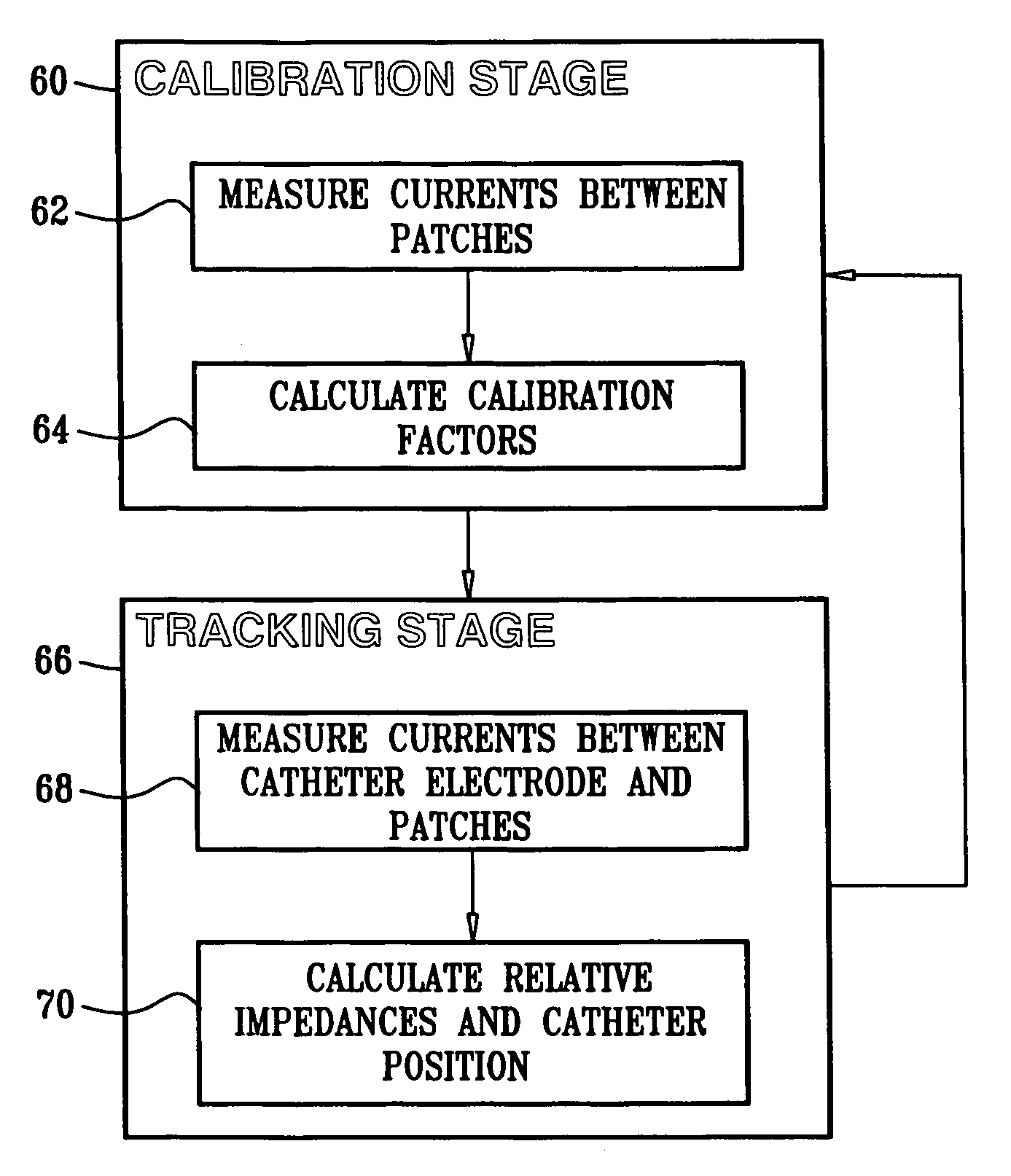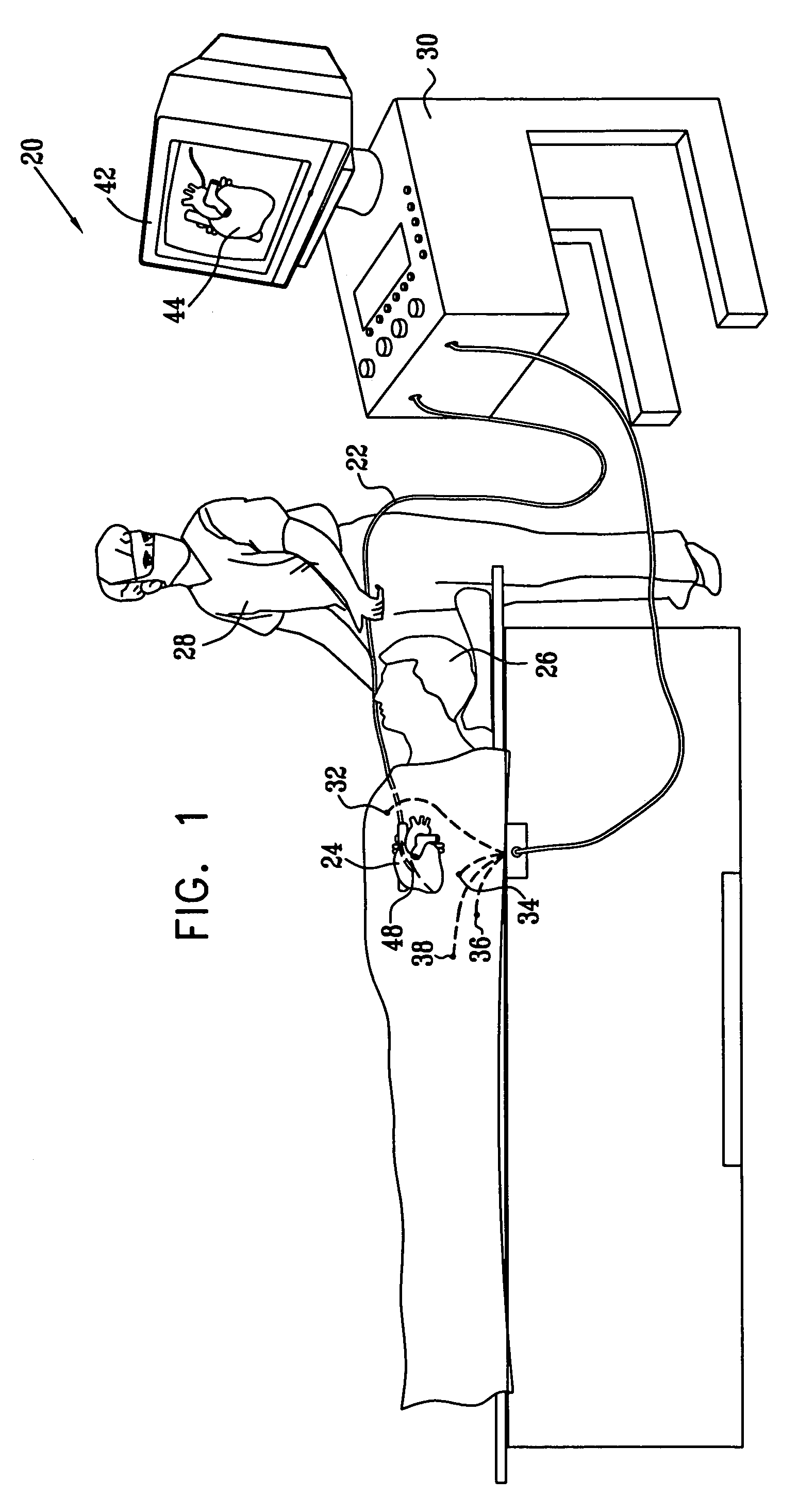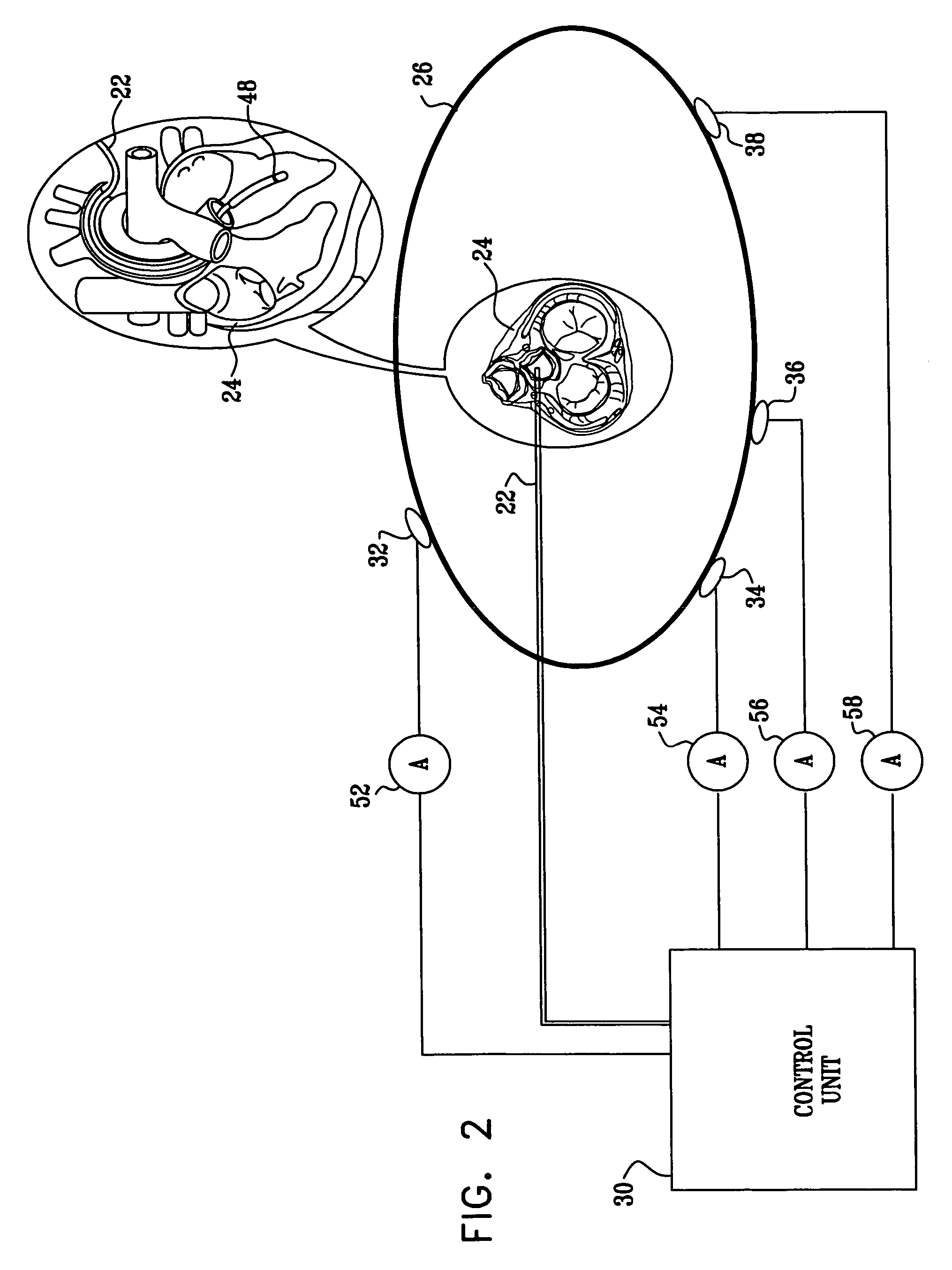Relative impedance measurement
a technology of relative impedance and measurement method, which is applied in the field of tracking movement, can solve the problems of sudden changes in the impedance measured from the body surface to the probe electrode, and achieve the effect of improving the accuracy of the measurement method
- Summary
- Abstract
- Description
- Claims
- Application Information
AI Technical Summary
Benefits of technology
Problems solved by technology
Method used
Image
Examples
Embodiment Construction
[0064]FIG. 1 is a schematic, pictorial illustration of a position tracking system 20, in accordance with an embodiment of the present invention. As described in the above-mentioned U.S. patent application Ser. No. 11 / 030,934, impedance-based position tracking in system 20 is performed by inserting a probe, such as a catheter 22, into an internal body cavity, such as a chamber of a heart 24 of a subject 26. Typically, the catheter is used for diagnostic or therapeutic treatment performed by medical practitioner 28, such as mapping electrical potentials in the heart or performing ablation of heart tissue. The catheter or other intrabody device may alternatively be used for other purposes, by itself or in conjunction with other treatment devices.
[0065]The distal tip of catheter 22 comprises at least one electrode 48. Electrode 48 may be of any suitable shape and size, and may be used for other purposes, as well, such as for electrophysiological sensing or ablation. The electrode is con...
PUM
 Login to View More
Login to View More Abstract
Description
Claims
Application Information
 Login to View More
Login to View More - R&D
- Intellectual Property
- Life Sciences
- Materials
- Tech Scout
- Unparalleled Data Quality
- Higher Quality Content
- 60% Fewer Hallucinations
Browse by: Latest US Patents, China's latest patents, Technical Efficacy Thesaurus, Application Domain, Technology Topic, Popular Technical Reports.
© 2025 PatSnap. All rights reserved.Legal|Privacy policy|Modern Slavery Act Transparency Statement|Sitemap|About US| Contact US: help@patsnap.com



